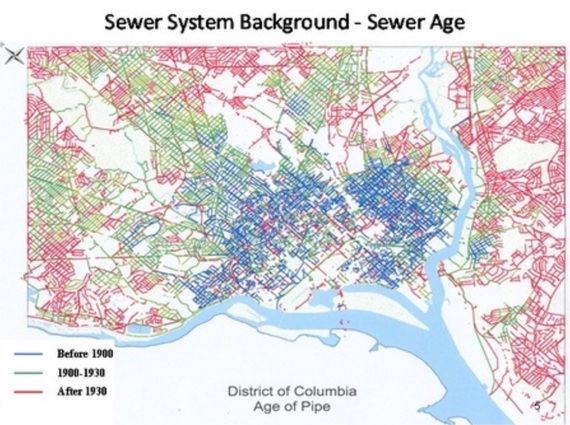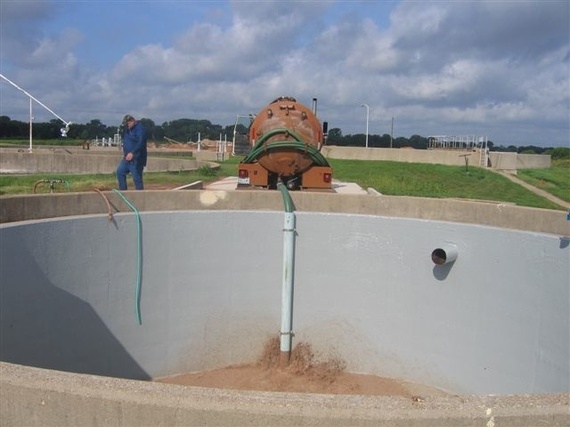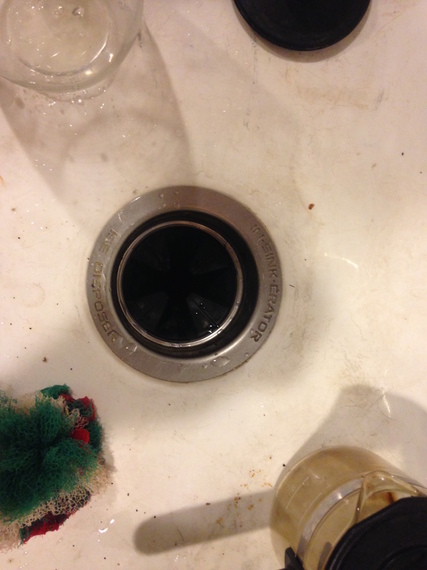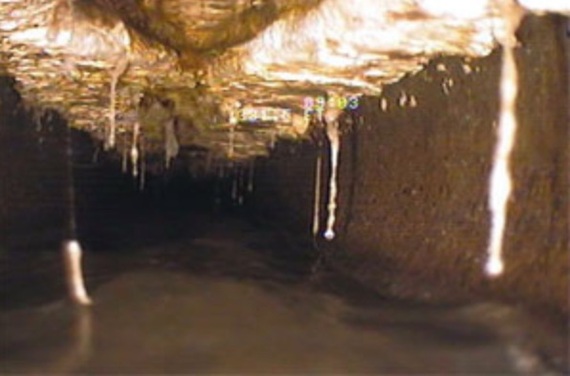I can take my food scraps, run the water and have them magically ground and sent through the sewer pipes to the wastewater treatment plant. There are enormous potential for resource recovery at these facilities. Here I am referring to both the potential energy in the food scraps and the nutrients and carbon that can be returned to the soil (to grow more food). And much of that potential is being realized. However, most of that recovery happens at the end of the treatment train. Putting your scraps into the sink and expecting their value to be realized at the end of the pipe is in many ways a pipe dream. It sounds good on paper but there are a number of factors that make the reality very different from the concept. Here are a few.
The first reality is the fact that if I take a significant portion of my food scraps and put them down the drain I will have a backed up sink and a busted disposal unit. I would not recommend you try one of those things on avocado pits, chicken bones or even too much left over pasta. Sour chocolate milk is one thing; high solids and/or heavy solids and grease are a whole different ball game.
If you change your perspective from what is good for your sink to what is good for the planet, you also realize that this convenience should be used as a back up plan rather than as your first defense. From your sink your scraps make the long journey to the wastewater plant through the sewer system. I like sewers and I love wastewater treatment. The sewer system was home to one of my long time favorite characters- if you haven't seen Art Carney in the Honeymooners- you really should. 
Despite my fondness for these systems, they are far from perfect. Sewer system are generally very old and as a result, can be very leaky. That means that what you put down there expecting it to get to the treatment plant may get leaked/ lost along the way. Much of the discussion of aging infrastructure this political primary season can be applied to our wastewater collection systems. 
Some of the liquid that you put down those pipes turns to solids and can clog the already tired systems. Here I am talking about things like bacon fat, one component of what is called FOG (fats oils and grease)
http://beta.greshamoregon.gov/city/city-departments/environmental-services/wastewater-division/template.aspx?id=13792
Much of your scraps can be eaten en route to the plant. Not only by sewer rats but also by sewer microbes. I am not saying that rats should go hungry- I loved Ratatouille (http://www.imdb.com/title/tt0382932/ ), I am just saying that creating energy and recycling nutrients are higher priorities for me.
Once the material gets to the plant it goes through several processes before going to anaerobic digestion. Here is a link to a video showing the whole process (https://www.youtube.com/watch?v=jx5DUy3SMaU) Screening removes any artichokes leaves that have made it through the journey intact. The solids from screening go to landfills- minimal energy recovery, no nutrient recovery. Then the water moves to secondary or aerated treatment. Here oxygen is pumped through the wastewater to get rid of carbon. Much of the nitrogen is also lost. This is necessary to make the water clean but it is a real waste if you are thinking about resource recovery. It uses energy to waste the energy contained in the wastewater. This approach has given us clean water but it is highly energy intensive. Only after most of this energy is wasted does the energy recovery process actually begin. Anaerobic digestion and solids recovery and use are great. We just need to reroute the journey from the sink and through the plant directly to those digesters to make this a true case of resource recovery. There are examples of wastewater plants accepting food waste at the plant and putting it right into digesters. Waco, TX is a leader here (https://www.biocycle.net/2010/05/17/anaerobic-digestion-of-high-strength-organics-solves-treatment-plant-challenges/).
I was one author on a report done for the State of Oregon that evaluated different ways to recover the value from food scraps. In sink digesters were rated low in that report with direct digestion and composting both ranked much higher. If you want more detail- here is a link to the full report : http://www.oregon.gov/deq/LQ/Documents/SWdocs/FoodReport.pdf
In other words, think of in sink digesters as a convenience to be used sparingly rather than as a tool to save time and the planet.

